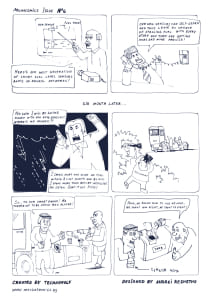You should prefer digital interface between GPS tracker and fuel consumption meter. And there are several reasons for it
1. Correct pulse counting by the GPS tracker can sometimes be disrupted when there is strong interference in the power supply network, while devices are on the verge of shutdown. We can deal with this with some advanced filtering in GPS tracking platform. But why these difficulties, if you can use the CAN interface or RS485 or RS232? Built-in error correction ensure reliable transmission of fuel consumption information to a GPS tracker in any conditions. 2. When using a pulse interface, the only parameter that the GPS tracker receives is information about the next portion of fuel of a fixed volume that has passed through the sensor. Based on this information and the time of receiving the pulse, the GPS platform software considers all the parameters we need – the total amount of fuel and the instantaneous fuel consumption. If the amount of fuel is not so difficult to determine – just sum up all the messages from the GPS tracker, the instantaneous consumption is calculated based on the time of registration of the next number of pulses transmitted to the server. As a result, the instantaneous fuel consumption has little to do with reality and is poorly suitable for analysis. In addition, GPS tracking software often does not know how to determine instantaneous fuel consumption in this way, leaving the user without an important element of reporting. When using a fuel consumption sensor with a digital interface, instantaneous fuel consumption is calculated by the fuel consumption sensor itself. Software can only display a graph of this parameter, which is much easier.
Example : instantaneous fuel consumption chart, calculated by Wialon based on pulse fuel meter data:
We can see high spikes of fuel consumption above 200, 400, 800 liters/hour, which are not real. Flow meter is okay, total fuel consumption is true. These spikes These spikes stretch the vertical scale of the graph, and complicates its analysis.
When instant flow is calculated by a flow meter, there are no such defects:
3. Through the digital interface, you can transfer other parameters, not only fuel consumption. Some of them are useful to the user of the system, for example, information about fuel consumption and engine operating time in various load modes: idling, nominal load mode, overload, as well as registration of attempts to interfere with sensor operation. For technical support will be useful instant fuel rate in the supply and return lines of the flow meter. A complete list of parameters can be found in the description of the Delta RS, MODBUS protocols and the description of the CAN messages of the Eurosens flow sensors.
4. Compatibility. If the flow meters with RS232 / RS485 interface are compatible only with some devices (Galileo, Neomatica, Smart, trackers with MODBUS), then in the case of a flow meter with CAN bus interface – you just a tracker with CAN J1939 bus support to ensure the compatibility.
5. More at the same cost. All RS and CAN flow meters still have a pulse output, it can be used, for example, to monitor the disconnection of a cable. In the absence of fuel consumption at the pulse output of the fuel consumption sensor “high” voltage level. Even at the “low” level, at the moment of an impulse, the voltage does not drop to zero (a little more than 0.5 V). Thus, if we measure the voltage at the pulse output with a conventional analog input of the terminal, we can control the disconnection of the connector: when the flow sensor is connected, there cannot be zero.















We are in social media
Facebook
LinkedIn
Youtube